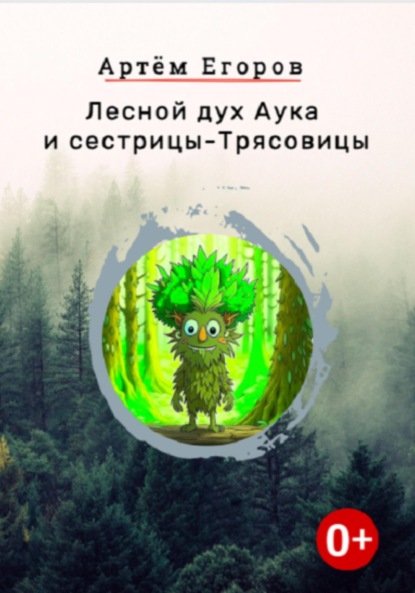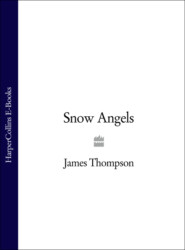По всем вопросам обращайтесь на: info@litportal.ru
(©) 2003-2024.
✖
Lucifer’s Tears
Автор
Год написания книги
2019
Настройки чтения
Размер шрифта
Высота строк
Поля
‘I’m trying to figure out if it’s possible to install a three-round-burst selector switch into a Glock Model 19,’ he says.
‘Why?’
‘Because, as every soldier knows, three-round 9mm bursts take men down, single shots usually don’t.’
‘Three-round bursts often kill, not part of our mandate.’
He gets a cocky look on his face. ‘Show me where it says that in the police handbook.’
There is no police handbook or detailed set of rules and codes. He’s fucking with me. ‘Don’t be a jackass,’ I say.
He says nothing.
‘Well, can you?’ I ask.
‘Can I what?’
‘Install the selector switch.’
‘Yes.’
‘If you shoot someone, they might examine your weapon. If they see the selector switch, you’ll lose your job, maybe get prosecuted.’
‘The switch can be removed and the drill tap filled with a small screw, which no one will ever notice.’
I can’t hide my amusement any longer. I shake my head and laugh. ‘And what about the bullets?’
He grimaces. This must be even worse than modifying his weapon. ‘I’m drilling cavities in the lead tips and filling them with glycerin. When a bullet collides with flesh, it slows down. The liquid inside retains its inertia and releases excess energy by ripping through the front of the bullet. It leaves a jagged slug, and lead fragments continue to tear up tissue. It creates a larger wound than a normal round and causes severe hydrostatic shock.’
I’ve heard of this somewhere before. It comes to me and I tease him. ‘In a thriller called The Day of the Jackal, an assassin fills his bullets with mercury. Why not do the same? That way, when you shoot crooks, you can poison them, too.’
He doesn’t see the humor. ‘Obviously because when they autopsied the body, I’d get caught.’
This kid has a few screws loose. ‘Why not just shoot hollow-point rounds?’ I ask.
‘They expand on penetration but tend to remain intact. Glycerin is more effective.’
‘I see. Let me show you something. Give me a bullet.’
He tosses one to me and I catch it. I take out a pocket knife, notch a cross in the soft lead tip and show it to him. ‘It’s called cross-hatching,’ I say. ‘Some people call them dum-dum rounds. On impact, the bullet deforms and breaks into chunks along the cut lines. You get your big wound channels, multiple exit points, severe blood loss and trauma, and someone would have to look for it in order to detect it.’
He looks both impressed and disappointed. ‘My way is more fun,’ he says, ‘but I have to admit, yours is more practical. Where did you learn it?’
‘My grandpa showed it to me while he taught me to shoot.’
My own words take me by surprise. My ukki, now an accused mass murderer, taught a child how to dum-dum bullets. I suppose a man from his generation – born just after the Finnish Civil War in 1918, and then later a combat veteran of the Second World War – must have thought the generation to come should be prepared for wars of its own.
‘Your grandpa must have been a cool guy.’
‘Yeah, he was.’
I fold up the knife and put it back in my pocket. I think about where I got it, and whatever amusement I feel at Milo’s expense disappears. Valtteri’s son used it to butcher Sufia Elmi. Valtteri said he hid the murder weapon by keeping it in his pocket, because no one would ever look for it there, and so he would have a constant reminder of his failures. After the inquest, I stole the knife from the evidence locker, and like Valtteri, I keep it in my pocket so I won’t forget my own failures.
‘Are you going to tell anyone about my hobbies?’ Milo asks.
‘You realize that, even if you remain a policeman until retirement age, the odds of you having to fire your pistol in the line of duty are about a thousand to one.’
‘You did,’ he says.
Point taken. ‘Just stop doing it,’ I say.
He nods.
With agile fingers, Milo reassembles the Glock in under a minute. He practises field-stripping it. ‘What did the head honcho want?’ he asks.
‘Too much,’ I say.
The visit from the chief intrigues him. I can see he wants to press the issue, but restrains himself.
‘Any dead bodies to look at?’ I ask.
‘Yeah. Some.’
Helsinki homicide is a body factory. I check out three to four corpses during a normal shift. Always understaffed, the three teams in murharyhmä, the homicide division, a total of around twenty-five detectives, look into about thirteen hundred deaths a year. Most of them, as homicide cops call them, are grandmas and grandpas, the natural deaths of the elderly. A fair share of the remaining deaths are accidental. About a dozen of those twelve hundred will be ruled homicides and investigated, down from about three dozen murders only a decade ago, due to improved on-site trauma care and response time. It’s saved a lot of lives. Also, I figure because of the massive volume of death investigations, some of the more subtle premeditated murders go undetected.
We also look into an average of a hundred and twenty-five suicides each year. Helsinki has a higher rate than the rest of Finland, partly because of sexual minorities. They come from all over the country to the nation’s largest city, seeking the acceptance and promise of happiness that they lacked in smaller communities. Since they have higher rates of depression and mental illness than the city’s norm, and hence a greater propensity toward self-destruction, I presume many of them don’t find what they’re looking for. In the couple of weeks that I’ve been working in homicide, I’ve looked at twenty-seven dead bodies, but I’ve yet to investigate one as a possible murder.
Over the next hours, Milo and I examine an overdosed junkie, a middle-aged man who died of a heart attack while watching television, and a teenage girl who got drunk, passed out in the snow and froze to death. It’s eight thirty a.m. We should have gotten off work a half hour ago. My phone rings. It’s Arto, my boss. ‘I know your shifts are over,’ he says, ‘but we’re shorthanded. I’ve got a murder for you if you want to take it.’
This takes me aback. I didn’t think he was prepared to trust either me or Milo with a murder and risk the precious murharyhmä winning streak and reputation, unless we stumbled upon one in a normal death investigation and he couldn’t take it away from us.
‘Do tell,’ I say.
‘A woman was beaten to death in Töölö. The responding officers say it’s bad.’
I ask Milo. He’s about to jump up and down from excitement. If I take it, it means I won’t get a chance to sleep tonight, but solving a murder might go a long way toward quelling the misgivings the other homicide unit members have about me. What the hell. I probably wouldn’t be able to sleep anyway.
‘Yeah,’ I say, ‘we’ll take it.’
Arto gives me the address and says, ‘A forensics team is already on the way. Get over there now.’
Chapter 5
Milo and I take the car we signed out from the police garage earlier. The department is big on economy. We get a Ford Fiesta. Milo wants to drive, and given the icy road conditions, he does so faster than necessary. The murder scene is only a few minutes away. A time and temperature sign on the side of a building reads eight forty-four a.m. and minus twenty-four degrees. Snow cascades through the darkness.
Europe is experiencing its worst winter in thirty years. Even Helsinki, eminently well-prepared for cold-weather conditions, is in chaos. Hoarfrost coats everything. Constant plowing has created mountains of snow and buried cars. The central railway station is out of commission. Trains still running have to be frequently deiced, and it’s wreaking havoc on their timetables. Water mains have burst and flooded the streets. The water has turned into vast sheets of ice and brought the tram lines to a standstill. Traffic accidents abound.
This is the antithesis of the normal Helsinki winters I experienced living here years ago. Usually, in January, the temperature hovers around zero. Helsinki is like that most of the winter, although sometimes the temperature dips down to as much as minus twenty or thirty. We get some snow and it melts. Snow melt snow melt snow melt. Makes it like walking around in icy gray mud for most of the winter. Still, at a certain point some snow piles up. Then the spring thaw exposes a winter’s accumulation of dog shit, and the city is overwhelmed by the stench for a week or two. I missed Arctic winter during my seven years here, the meter or two of snow reflecting moon and starlight. The beauty of snow-laden forests. This year, we get to experience real winter in Helsinki, and it brings joy to my heart.






